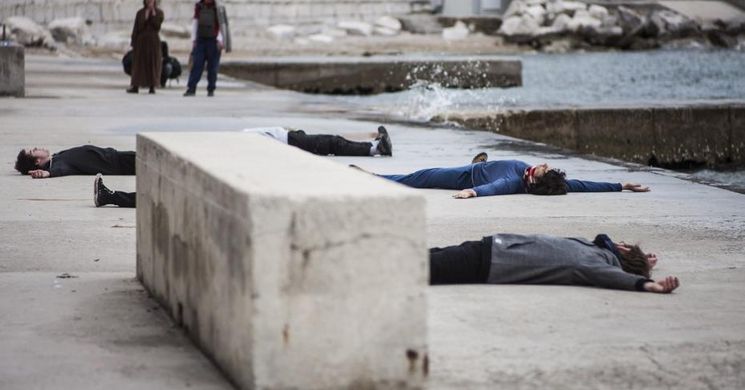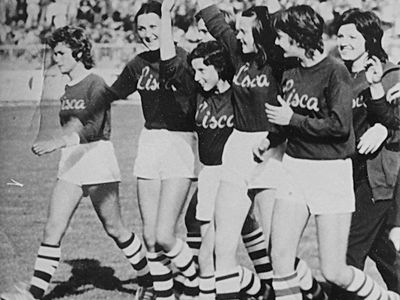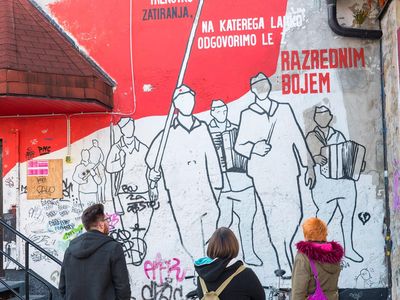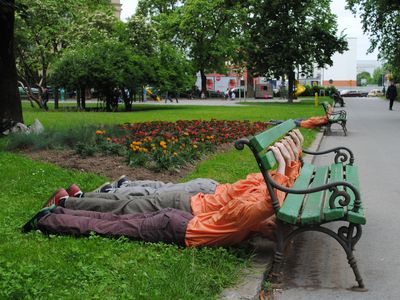Rock today, Wind tomorrow!
City Metamorphoses
Friday, 29 June at 17:00 and 19:00
Gosposka Street
City Metamorphoses are not a classic performance, nor are they an installation, exhibition, concert, or an educational or networking project. What they are is a completely new art form combining elements from all of the above. This new form aims for a playful artistic bout with the ‘Here and now!’ of urban space, all while making use of effective visual imagery, sharp and striking rhythms, choir-like scenes, elements of surprise, surreal scenes, and unexpected yet warm humour, with the city of Maribor playing the leading role.
The actors, freed of fixed roles/characters, dramatic twists, and predefined mise-en-scènes, move around the city, aiming to find in the space and action – whatever that may be – their positions and sense. After coming in touch with reality, they undergo a virtuosic metamorphosis, transforming from motionless statues into rolling monsters, a platoon of soldiers, a parade, a fan club or an abstract mass of bodies. Assisting them is the director, safely hidden from the inquiring eye of the audience, who dictates the content, rhythm and dramaturgy of the action with his ‘live direction’.
Imagine a splash of the river or a slight breeze rolling down the streets, turning what it is into something it is not but will be, is about to become, and always has been. It discovers things that are so quotidian that nobody notices them day in and day out. It takes us beyond our expectations, to a state of consciousness where the world is still new, unspoiled and undiscovered. It binds us all into one and binds one into all.
We are the City!
Self-organized boroughs and local communities – 5 years
18:00 – 21:00
Rotovški trg (Rotovž Square)
It’s clear as day that a community needs people who help shape it by opening their eyes and ears to what’s happening in their community, talking about it with their neighbours; people who know exactly what’s bothering them and what they want, and people who try to act on what they need. This is especially true in Maribor, where local policies and politics are designed without involving the people. Nobody asks us what we want, nobody hears what we have to say. Well, except when it’s election time – when they are desperate for our votes. The right to our city has been taken away from us!
Five years have passed since neighbours began to meet at assemblies of self-organized local communities of Maribor, hell-bent on having their voice heard and considered by creators of city policies and politics, no matter the colour and shape of the ruling entity. The communities of Nova vas, Studenci, the co-joined communities of CD Center and Ivan Cankar, Radvanje, Magdalena, Tabor, Pobrežje, Koroška vrata, Kamnica, and Pekre have together held a total of 900 community assemblies, all hosted by volunteers of the City Council Initiative. Slowly but surely we are building awareness that we do have the right to decide about our city, about how our common living environment is and will be built. It is a right we must exercise if we wish for the city to serve all of us who live in it-
Come and see how your neighbours spend their free time!
Everyone invited and welcome!
Hats off to you, Ladies!
Friday, 29 June
18:00 - 21:00
Glavni trg 7 (Main Square) – Regional Museum
In the period 1971-1974, mostly thanks to football enthusiast and coach Pepi Kirbiš, FC Maribor had a women’s football team, the s. c. Violets. We wish to commemorate this lesser known part of Maribor’s football history with an exhibition and pay homage to Mr Kirbiš and his Violets, who were the pioneers of women’s football in Slovenia. After 1974, in hopes of putting Slovenia on the map of women’s football in former Yugoslavia, the former football clubs Olimpija and the Violets merged to create a single football club, the FC Ljubljana.
As a bit of trivia: women’s football matches were usually played right before the matches of their male counterparts, so FC Ljubljana played right before the match Crvena zvezda vs. Partizan in front of a sold-out Maracana stadium in Belgrade that was able to accommodate up to 100,000 people at the time. It is safe to say that this joint football club is still the only Slovenian football team to have played in front of the largest audience in the history of Slovenian team sports.
Rajzefirbčni sprehod (Rajzefiber Tour)
Graffiti Tour
Friday, 29.6.2018
18:00
Meeting point: Gosposka Street 11 (Rajzefiber)
Rajzefiber Tours are walking tours around the city where you can get to know the stories of people, courtyards, streets, buildings, and all those hidden places our beloved Maribor is so good at hiding. Rajzefiber tour guides take you through narrow alleys, hidden stairways, forgotten courtyards, and dusty rooftops. Meet Maribor and the people of Maribor, who may perhaps be known as a bit stubborn, but we’re always hospitable, soft of heart, serious, yet still cheeky. Allow us to open the doors to our city, a city that will never cease to enchant you.
Graffiti, street art, art from the edge, an art form that manifests its creative expression on the streets, most often finding its canvas in the most dilapidated parts of the city and often becoming part of the city’s urban skyline, an art form that penetrates the mind-set and the city map all citizens hold in their heads and hearts. Join us for a graffiti walking tour to see select pieces in the city centre.
Urban Sketches
DUM – Artists’ Association
29.6.2018 ob 18:00
Gosposka Street
A series of urban choreographies that choreographer and dancer Mateja Bčar had staged at various urban locations between 2009 and 2016 (Zelena luč, 2010; Parking packing, 2012; Neumestljivi, nedoumljivi, 2013; Zelena miza, 2015) feature an aesthetic membrane of choreographic formations, rhythms of quotidian tasks and social rituals, harmonized compositions of chaotic passages, and non-functional, yet rational choreographic commentaries of architectural lines, all of which provide the viewer with a completely new perspective in which his own kinetic automatism may soon appear a problem. Urban choreographies performed by dance troops visit passers-by and pedestrians – generic viewers called upon by templates and applications strewn about by public foundations. They penetrate, without hardly anyone noticing, the routine of locations that do carry names, but are inhabited only by quick passages and moment-long stops on the road of daily errands. When the viewer finds himself or herself in the urban anesthetization of the city, he or she always takes a glance over the shoulder, as he or she cannot shake the unpleasant feeling that everyone but him- or herself is part of the choreography.








